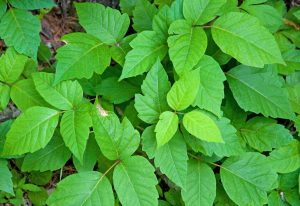 In my youth, the running buddy and I would go exploring. We learned about biting and stinging things in the creeks, bayous and woods the hard way. When I spent time climbing trees I was on constant lookout for the Asp. I’m proud of the fact that as of this writing, they haven’t got me. Can’t say that about my companions. The Asp is the immature stage of the Puss Moth. The Asp poses no threat to the plants, only to you. Their stings are not fatal but should be avoided.
In my youth, the running buddy and I would go exploring. We learned about biting and stinging things in the creeks, bayous and woods the hard way. When I spent time climbing trees I was on constant lookout for the Asp. I’m proud of the fact that as of this writing, they haven’t got me. Can’t say that about my companions. The Asp is the immature stage of the Puss Moth. The Asp poses no threat to the plants, only to you. Their stings are not fatal but should be avoided.
Poison ivy, oak and sumac never affected me. I could wade in stuff and never get as much as a bump. I was invincible when I came to the poisonous vines and shrubs until February 2011. Some landscaping work gave me an impressive case of poison ivy. Since that fateful day I go to great lengths to avoid it.
I expect to find it in the woods but not in the home landscape. If you do find poison ivy its location determines the course of action. Poison oak and sumac are rarely found in urban areas. Ivy’s of any kind can be hard to kill because of the waxy leaves. Herbicide designed to kill ivy’s will also kill poison oak and sumac as well as non-targeted broad leaf plants. For vines (poison or others) climbing on trees, shrubs and fences, you cut the vine in two places. First just above ground level and then several inches (or feet depending on the situation) above that. Paint the first cut with an herbicide with a poison ivy label. Remember that physical removal will be required to remove all potential irritations. Even dead they can cause problems, so dress accordingly and never ever burn it.
The old way to kill poison ivy, oak and sumac is let the goats eat it. They are unaffected by the toxin and love the leaves. Goats do a marvelous job at cleaning up creek bottoms and pond banks. If you don’t have goats you can rent them.





